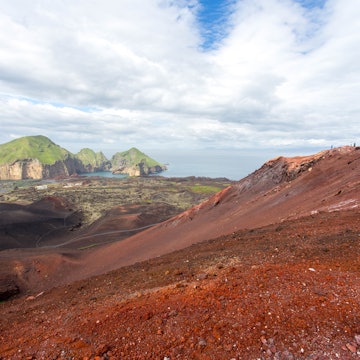
Overview
Black beaches stretch along the Atlantic, geysers spout from geothermal fields and waterfalls glide across escarpments while brooding volcanoes and glittering ice caps score the inland horizon. The beautiful Southwest has many of Iceland’s legendary natural wonders, so it's a relatively crowded and increasingly developed area. The Golden Circle – a tourist route comprising three famous sights: Þingvellir, Geysir and Gullfoss – draws the largest crowds outside of Reykjavík, but visit during off-hours or venture into the wilderness and you’ll find quiet hiking routes and otherworldly scenes.
Leave the planning to a local expert
Experience the real Southwest Iceland. Let a local expert handle the planning for you.
Must-see attractions
Get a book. Get inspired. Get exploring.
in partnership with getyourguide

















